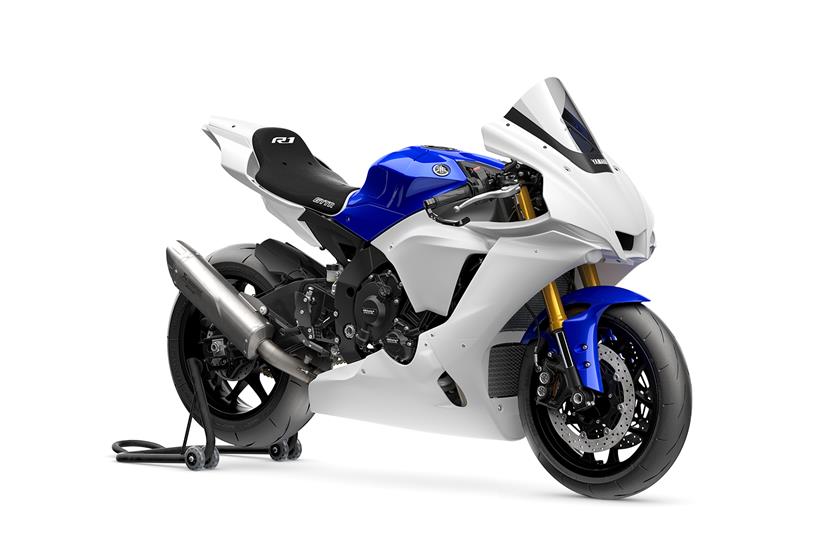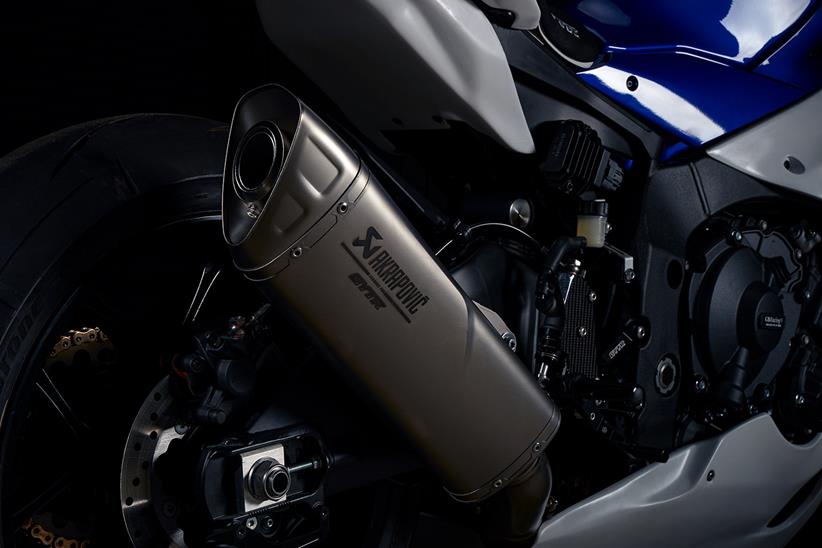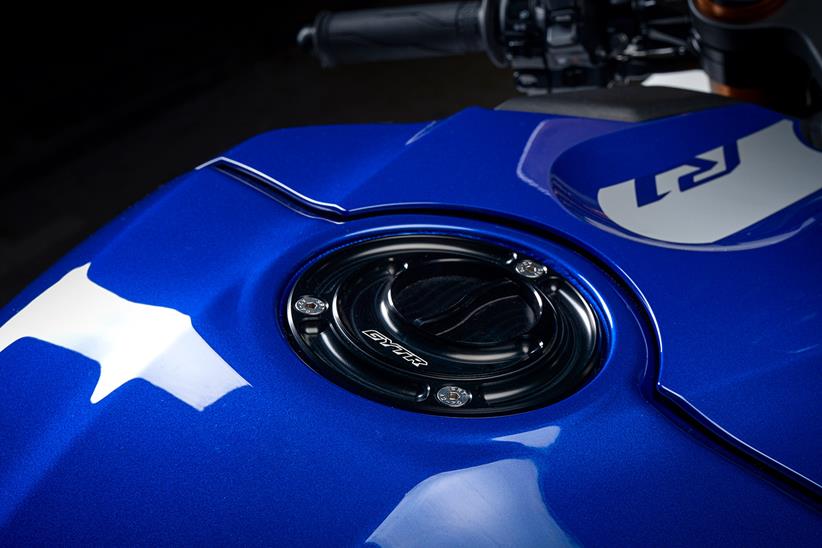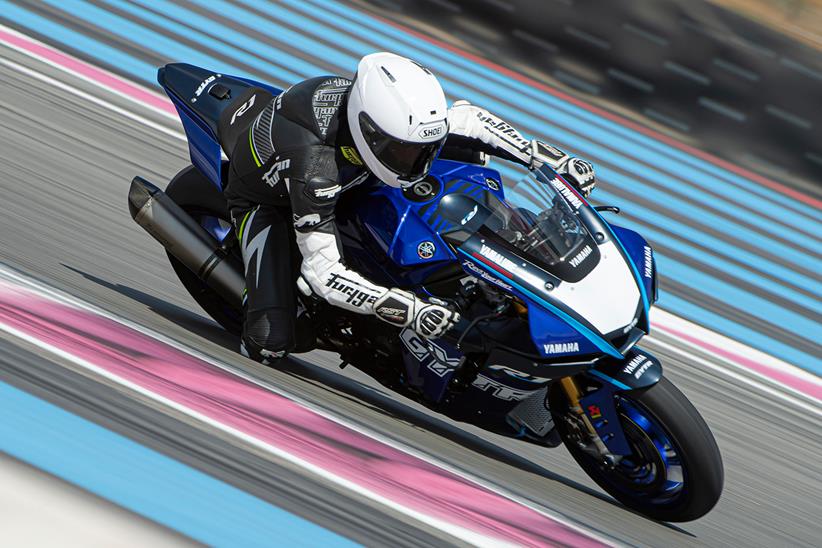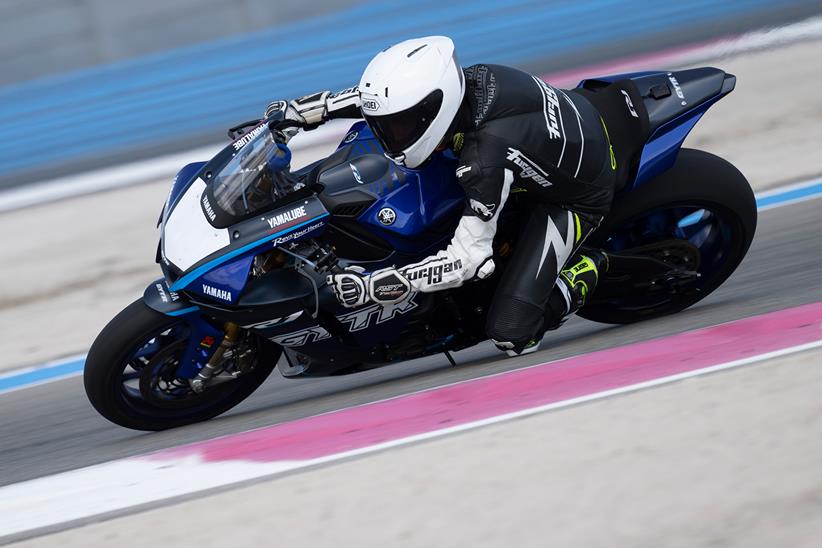Yamaha Europe mark 25 years of the R1 with special anniversary GYTR Pro models
Yamaha Europe are marking 25 years of the iconic R1 superbike with a limited run 25th Anniversary edition of their R1 GYTR Pro superbike – the closest thing customers can buy to Toprak Razgatlıoğlu’s race-winning World Superbike rocket.
“With the R1 GYTR Pro 25th Anniversary edition our customers have the opportunity to enjoy a unique bike,” Yamaha’s Road Racing Manager Andrea Dosoli said. “A bike that is as close to the specification of our world championship race machines as it is possible to experience without having a Yamaha contract to race in WorldSBK or EWC (Endurance World Championship).”
The idea behind the GYTR Pro scheme is to give the most dedicated of trackday riders and racers the chance to purchase parts developed alongside Yamaha’s World Endurance and Superbike programs – designed by the team at Yamaha Motor Research and Development Europe.
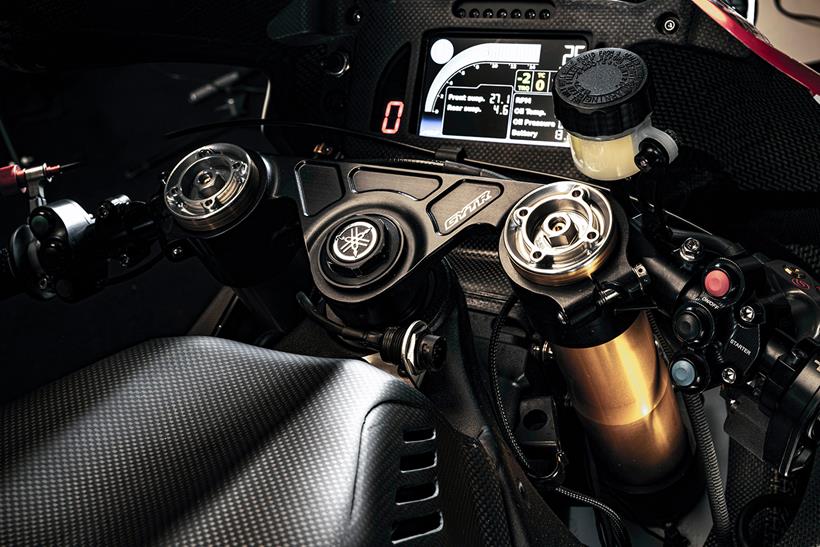
Standing for Genuine Yamaha Technology Racing (GYTR), Pro parts for the R1 include a stronger lightweight carbon rear subframe – designed to accommodate both a modified fuel tank with a lower centre of gravity and the Magneti Marelli ECU.
You’ll also find an underslung swingarm, developed specifically for Yamaha’s WSB race bikes – said to improve maximum lean angle and rear grip, plus Brembo brakes all round. Carbon fibre bodywork covers everything up, with the latest in electronics – developed by the likes of Toprak, Andrea Locatelli, and test rider Niccolò Canepa – keeping everything in check.
To celebrate the R1 arriving back in 1998, Yamaha Europe have now packaged up the full range of these Pro parts to build 25 anniversary superbikes costing €159,000 each. Dressed in a special livery paying tribute to the original four-cylinder machine, the bikes are available to order online to then be built at one of the 25 GYTR Pro shops across Europe.
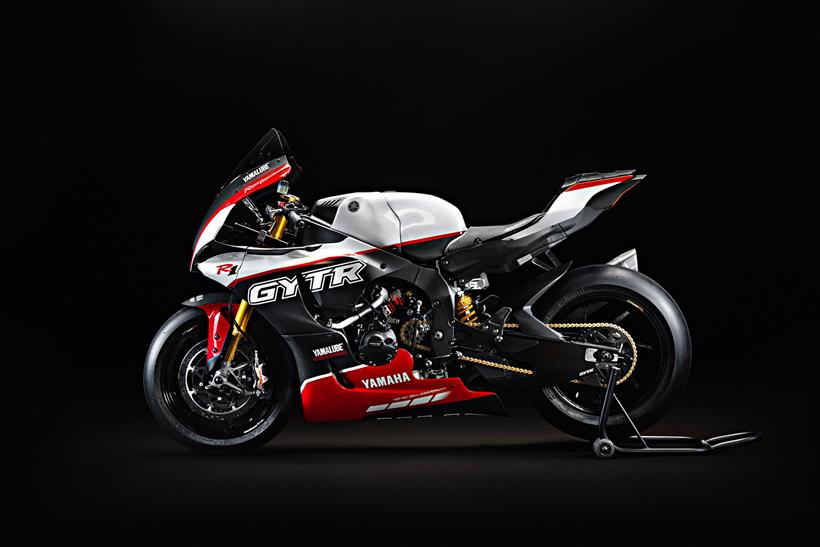
Prepared to the customer’s exact requirements, those opting for a UK chassis-up assembly can choose between Crescent Yamaha, who operate the factory WSB effort, and Raceways Motorcycles who run the brand’s official British Superbike team, McAMS Yamaha.
“Each of the exclusive R1 GYTR Pro 25th Anniversary edition units will be hand built with the full range of GYTR Pro performance parts by the experienced technicians at one of our GYTR Pro Shops,” Yamaha Europe President and CEO, Eric de Seynes said. “This is a process that few people, other than our professional racers, ever get to experience.”
Alongside owning your very special bike, each of the 25 owners will also spend a day at a race circuit with a team of Yamaha technicians.
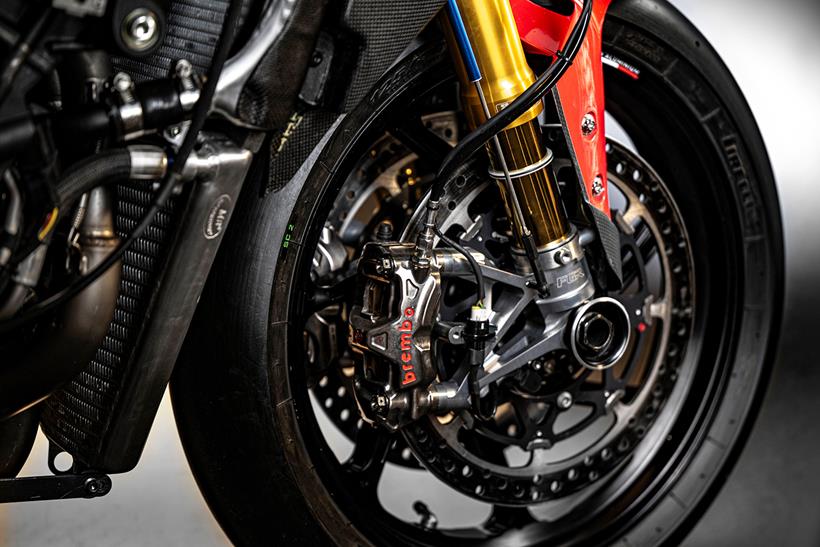
After initial set-up, owners will be run through exactly the same process that Yamaha’s world championship teams use to fine tune settings for each unique riding style. Very cool.
For more, go to yamaha-racing.com
Yamaha R1 GYTR ridden: Amazingly capable, but unnecessary for most
First published on 3 November 2022 by Dan Sutherland
We’ve been riding the 2023 Yamaha R1 GYTR at its European launch at Paul Ricard circuit in the south of France – putting the track only-version of the Japanese firm’s 998cc four-cylinder superbike through its paces in its natural habitat.
A non-homologated special, available through Yamaha’s 17 European Pro Shops at an estimated €25,000-€30,000, it sees the bike stripped of its road-going furniture and redecorated in 25 new performance-orientated parts said to bring it in line with FIM Stock 1000 racing regulations.
Expected to land in the first quarter of 2023, our launch machines were also decked out with optional racing switches, a quick action throttle, fully adjustable Öhlins FGRT 219 forks and a TTX36GP shock, Bridgestone slicks (it gets R11s as standard), Brembo GP4RX radial calipers with Z04 racing pads, and more. This can all be added at the point of purchase, in limited volumes.
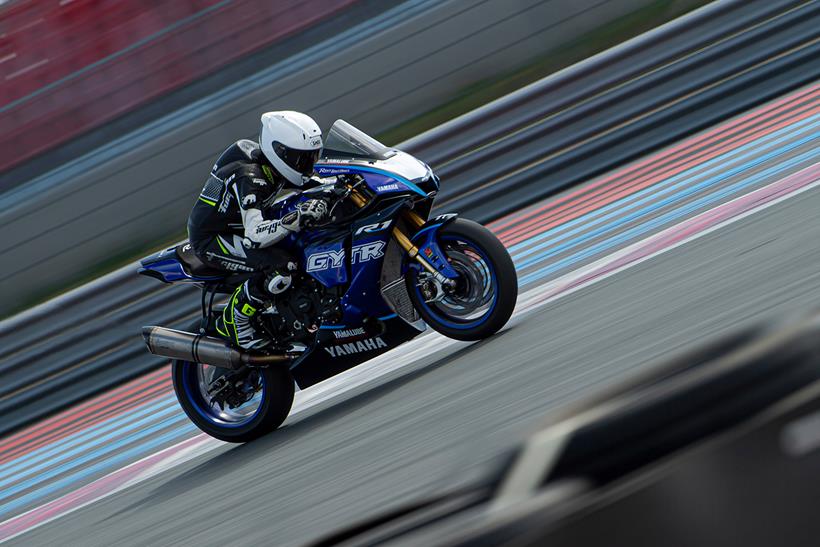
But enough about spec sheets, what is it like to ride? Well, it’s apparent from the outset that the GYTR means business. Yamaha might bill it as an accessible route into racing and more dedicated trackday endeavours, but there is no comforting road-friendly familiarity here. They also wouldn’t be drawn on performance figures, but we’d estimate 200bhp at the rear wheel. More than enough for your next open pitlane at Brands Hatch.
The normal switches are gone – replaced by a series of coloured buttons that look like they would be more at home on a PlayStation controller – and there’s no creature comforts like a side stand, or even a key!
However, no sooner had I lifted my feet from the floor and hunched onto the splayed clip-on bars, did I realise that this was a much roomier and (dare I say it) more comfortable proposition than the standard R1 I had ridden earlier that morning.
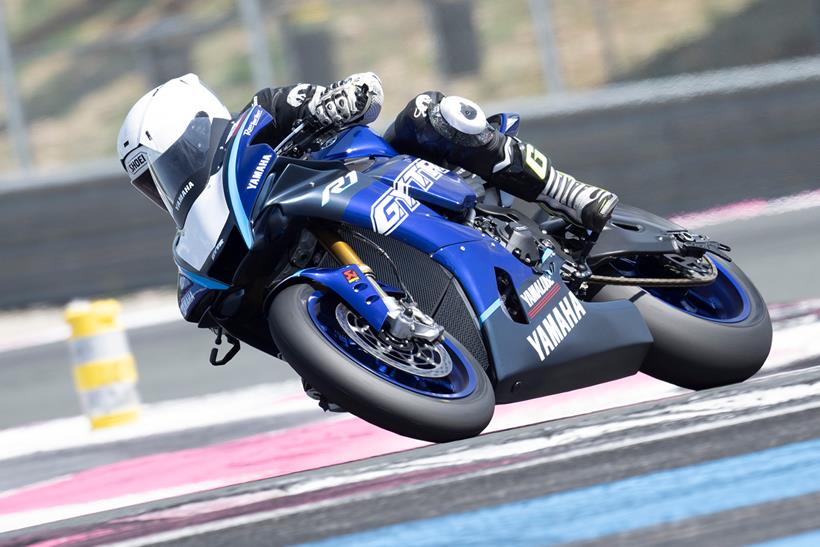
With the pegs dropped lower and the bars seemingly not as narrow, getting off the side of the motorcycle felt easier and more intuitive from the outset – letting you arrive at corners faster and focus more on snatching apexes, rather than battling discomfort.
It’s not exactly a sports tourer, but there was noticeably less pressure on my knees, and I couldn’t help but wonder why the road-legal donor version couldn’t follow suit. One of the biggest buyer turn off on a sportsbike is its lack of comfort, so why make those pegs unnecessarily high?
It’s better on the corner exit too – ditching the standard R1’s sometimes snatchy fuelling at low revs in Paul Ricard’s slower corners for a silkier pick-up that encourages you to twist round to the stop earlier without fear of a ginormous high side. Getting there was also made easier thanks to the inclusion of quick action throttle.

I’m barely scratching the surface of the GYTR’s capabilities, but even at a fast group trackday rider’s pace it flatters you – only bettered by optional the Öhlins suspension, which works with the compliant chassis to tip into a bend and hold a line with confident precision.
It might be a ballistically fast motorcycle, but changes of direction never felt forced, and my nerves had subsided after just a few laps – leaving me to get on with the all-important task of having as much fun as possible.
That said, the set-up wasn’t perfect for my circa 65kg frame, and under acceleration I did experience a weaving between second and fourth gear, plus some rear tyre movement when getting on the gas at corner exit. That’s nothing that couldn’t be dialled out in the pitlane though.
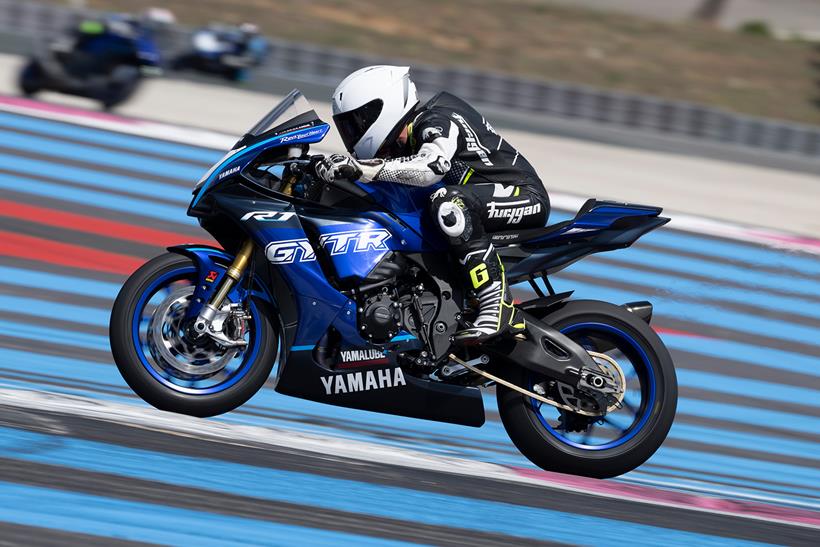
Once out of the corners and onto the straights, the GYTR impresses again. That’s no surprise though, given the fact it’s based on a motorcycle already capable of 186mph.
With a bespoke double bubble screen upfront, you’re noticeably more sheltered from the wind then the base R1, reducing fatigue and allowing for some savagely fast top speeds without the remotest morsel of neck ache.
In fact, the GYTR disappears off the clock at 299kmph in fifth gear along the Mistral Straight and kept on pulling through sixth to 13,000rpm. The excellent wind protection also allows you to keep listening to that gorgeous cross plane crank four-cylinder wail all the way through the slick gearbox. It was addictively good.
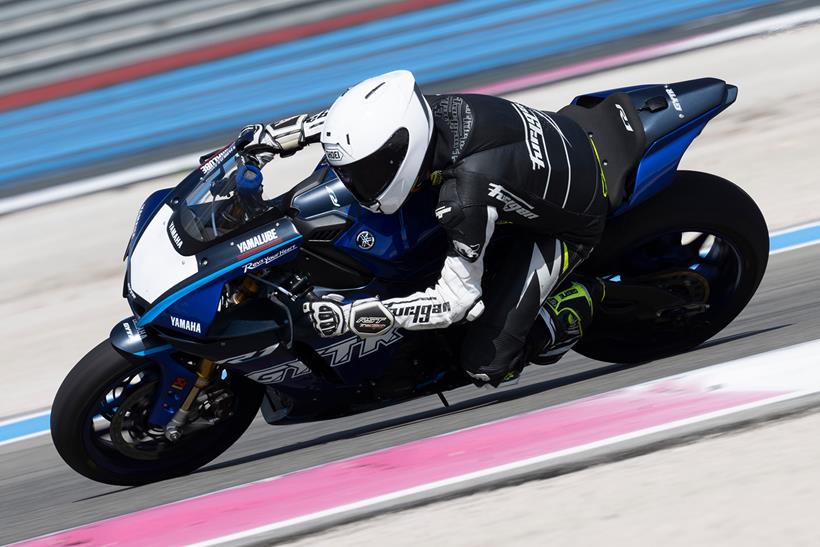
But is it too much of a good thing?The GYTR is undeniably brilliant, and I applaud Yamaha for its existence, but you need to be an experienced racer to really get the best from it. It might be easier to ride than the standard R1, but it’s still hugely physical and better than 99% of the people reading this test (not to mention the rider that wrote it).
To get the most out of the GYTR you need to be a racer of at least national level, and away from the glamour of Paul Ricard, at a narrow Oulton, or Cadwell Park, this exquisite WSB wannabe could start to feel more like an expensive, intimidating handful.
Would I rush out and drop £30k on one (that doesn’t even include the Brembo brakes or Öhlins suspension as standard)? Absolutely not.
The truth is, whilst obviously better than the standard R1, you don’t miss what you don’t know about, and for many riders the base-spec £18,200 road bike will be more than enough. Plus, you’ve still got the option to ride it on the road if you wish.
Get closer than ever to a WSB-spec R1: Yamaha unveil GYTR and GYTR Pro versions for 2023
First published on 5 September 2022 by Dan Sutherland
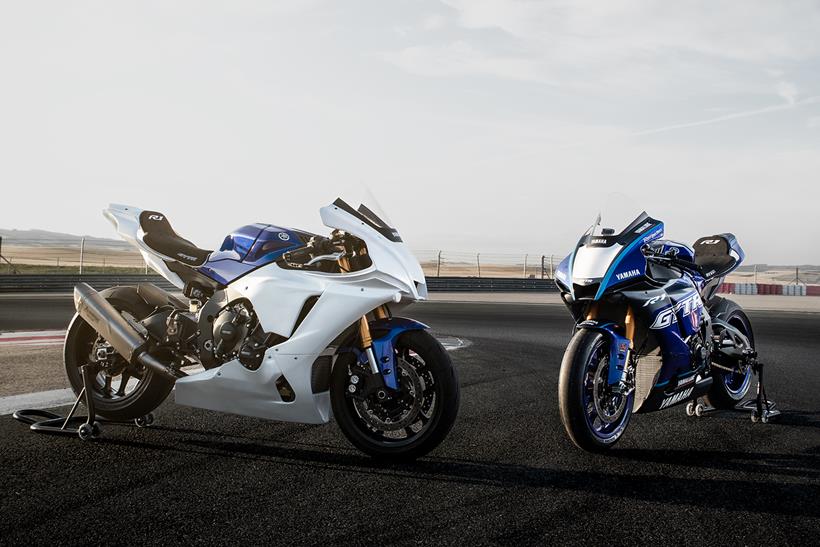
Yamaha have added their R1 superbike to the track-only GYTR range for 2023, giving devoted (and presumably well-heeled) customers a chance to get closer than ever to owning a WSB spec machine.
Although GYTR parts (Genuine Yamaha Technology Racing) have been available as accessory bolt-ons for a number of years, this is the first time the Japanese firm’s flagship superbike has been offered as a ready to race package – removing the faff of drilling aftermarket fairings and removing any unwanted road trim to sit gathering dust in your garage.
“With our R series, combined with the GYTR Racing parts, we try to cater to two target groups,” Yamaha Europe’s racing product management lead, Leon Oosterhof told MCN. “The first is what we call the track enthusiasts, who are basically trackday riders wanting to enjoy a few trackdays a year, but when they go, they really want to enjoy it, like the technology and want to have a cool machine.

“And, of course, also racers on many, many different levels – from the amateur hobby racer, all the way to a national, or international level.”
Expected to cost between €25,000 – €30,000 and set to arrive in the first quarter of 2023, the base-spec GYTR comes with 25 additional performance orientated parts, which bring the bike in line with FIM Superstock 1000 rules. These extras include a new ECU, wiring harness, stainless steel brake lines, race cowling (finished in white for you to add your own design), Brembo Z04 brake pads, Bridgestone R11 tyres, and more.
You also get a new Akrapovič Race exhaust, complete with a mid-pipe developed in tandem with Yamaha, to produce a fraction more power at less than 101dB. It makes use of the standard titanium headers, weighs over 5kg less than the standard system, and helps the bike meet ever-tightening noise restrictions faced at some circuits.
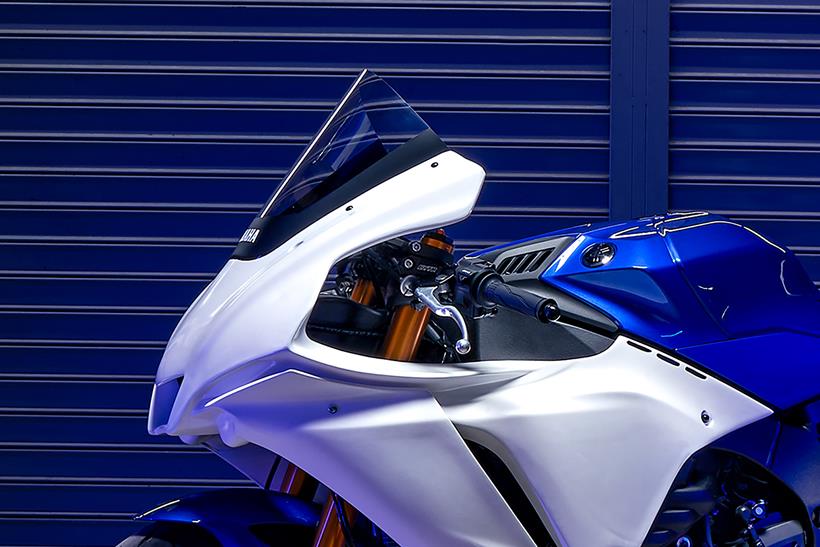
Further components, such as full Öhlins suspension, underslung rear calipers, Brembo master cylinder, and more can then be added to suit your needs and budget, on a limited basis.
Although impressive, chances are many trackday goers will find the standard R1 more than enough of a handful, with many also favouring much cheaper used motorcycles to limit the cost, should they experience a tumble.
“There is a part of that market, of course that will always prefer to choose a used machine as a base and that’s understandable, but that’s not something we as a manufacturer can tap into,” Oosterhof admitted. “What we are trying to do is to try and be very accessible in what we offer.”
As before, all GYTR bikes will continue to only be available only through Yamaha Pro Shops, with over 600 parts available across all models. This includes the R3, R7, R6 and now the R1. In total there are 17 shops of this kind across Europe, with Yamaha confirming plans to expand this to 25.
Yamaha R1 GYTR Pro
If the standard R1 GYTR isn’t enough for you, Yamaha will also sell you the GYTR Pro, which they are billing as the closest thing to owning a fully-fledged World Superbike.
Featuring components developed on short circuits by the likes of reigning WSB champion, Toprak Razgatlioglu, the Pro was actually first teased back at the 2021 Eicma show in Milan on the special GYTR Pro VR46 given to Valentino Rossi at the end of his MotoGP career.
On top of the standard bike’s package, Pro customers also get a new inverted swingarm, Marchesini rims, a carbon fibre subframe, a new dash, CNC triple clamp to house the new Öhlins FGR400 forks, carbon body work, and even a new fuel tank with a lower centre of gravity – lifted straight from the firm’s top WSB racers.
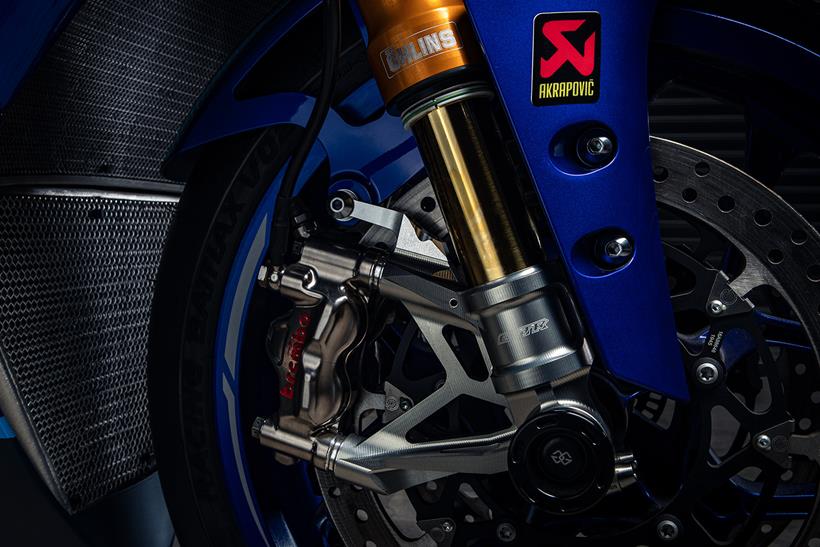
Pro models will be produced in limited numbers, with additional select parts available to bolster the standard GYTR model – again in a limited stock.
Both bikes were developed by current WSB test rider and world endurance racer Niccolo Canepa, who spoke to MCN and said: “When we started the development of this bike, the target was to make a bike that was as close as possible to the World Superbike, but also more useable for a wider range of riders, because the WSB bike is really extreme.
“The riding position is the same as the World Superbike and the performance – especially in the handling and the electronics – are really, really similar,” he continued. “But, it’s also more usable and more rideable and more enjoyable. Especially with the Bridgestone tyres – it’s really nice to ride, and really stable and this is the main target that we had and I am really happy with the result.”

But just how hard is it for a topflight racer to develop a bike that caters for everyone from enthusiastic trackday riders, to national level racers? Canepa explained.
“When I develop the World Superbikes I have to push to my limit and this is still not enough to be at the level of Toprak or Locatelli, but when I tested this bike we had to make it suitable for good riders, but also amateurs because everyone can buy it.
“This has been challenging, but the biggest happiness I’ve had is when Rob Juwett – who’s in charge of the GYTR project – tried it. He’s not a professional rider and after a few laps, he came back with a big smile and said: ‘This bike is so amazing, so easy to ride, and stable.’ This, for me, is the best thing.”
Yamaha R1 GYTR Pro key components
- Yamaha R1 GYTR Pro key components
- GYTR Pro Swingarm
- GYTR Pro large capacity and low gravity fuel tank
- GTTR Pro Carbon rear subframe
- GYTR Pro Triple clamp
- GYTR Pro Carbon cowling set
- GYTR Pro screen
- GYTR Pro Dashboard
- GYTR Pro Dash support
- GYTR Pro Handlebars
- GYTR Pro Handle bar switches
- GYTR Pro Marelli electronics (customised)
- GYTR Pro Airducts for brake calipers
- GYTR Pro Brake lines
- GYTR Pro Brembo wheel adaptors (front and rear) to fit in the Öhlins FGR400 front forksand the inverted swingarm
- GYTR Pro Clutch
- GYTR Pro Side steering damper with bracket and clamp
- GYTR Pro MB radiator
- GYTR Pro Akrapovic system
- GYTR Pro Brake lever protector





